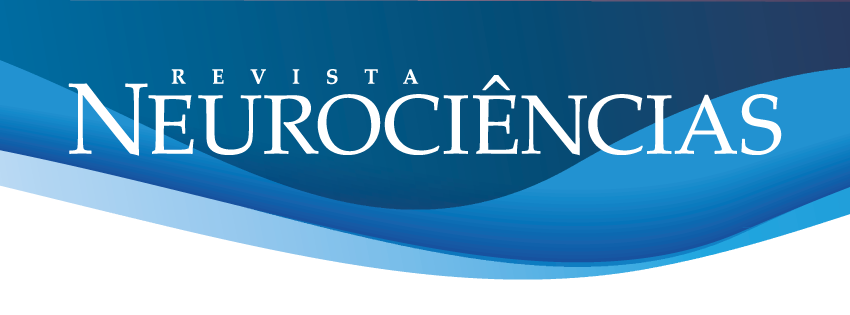Effects of dance on executive functions in children: an integrative review
DOI:
https://doi.org/10.34024/rnc.2024.v32.16053Keywords:
Dances, Executive Functions, Cognition, ChildrenAbstract
Introduction. Practicing dance is a physical activity that can help and bring benefits to children's health. Some studies indicate that dance demonstrates the ability to develop human potential, improve the basic skills of fundamental movement patterns, stimulate creativity, promote the construction of knowledge, in addition to providing feelings of well-being, socialization, motor coordination, a sense of space and benefits that affect executive functions. Objective. To synthesize from the literature on the effects of dance on children's executive functions and examine the benefits that dance can offer school-age students. Method. In this integrative review, the search was carried out in the PubMed, Scielo and Lilacs databases. The search criteria included articles that addressed dance, executive functions, children and the practice of dance as a form of physical exercise. Results. Five of the articles analyzed reported significant improvements in executive functions, while one demonstrated no notable improvements in its results. Conclusion. Although we found a limited number of articles that met the established criteria, the majority of them showed progress in executive functions through dance practice. Working memory, inhibitory control and cognitive flexibility were aspects that showed substantial improvements.
Downloads
References
Ferentinou E, Koutelekos I, Pappa D, Manthou P, Dafogianni C, Pappa D, et al. The Impact of the COVID-19 Pandemic on Childhood Obesity: A Review. Cureus 2023;15:e45470. https://doi.org/10.7759/cureus.45470
Spinelli A, Censi L, Mandolini D, Ciardullo S, Salvatore MA, Mazzarella G, et al. Inequalities in Childhood Nutrition, Physical Activity, Sedentary Behaviour and Obesity in Italy. Nutrients 2023;15:3893. https://doi.org/10.3390/nu15183893
Hu D, Zhou S, Crowley-McHattan ZJ, Liu Z. Factors that influence participation in physical activity in school-aged children and adolescents: a systematic review from the social ecological model perspective. Inter J Envir Res Pub Health 2021;18:3147. https://doi.org/10.3390/ijerph18063147
Lissak G. Adverse physiological and psychological effects of screen time on children and adolescents: Literature review and case study. Envir Res 2018;164:149-57. https://doi.org/10.1016/j.envres.2018.01.015
Cox L, Youmans-Jones J. Dance Is a Healing Art. Curr Treat Options Allergy 2023;10:184-95. https://doi.org/10.1007/s40521-023-00332-x
Souza KMOD, Lemos A, Matos FS, Silva VAAD, De Sousa LI, Fonseca RJB, et al. Atividade física e comportamento sedentário em crianças e adolescentes. Open Sci Res 2022;2:293-302. https://doi.org/10.37885/220207564
Kremer P, Elshaug C, Leslie E, Toumbourou JW, Patton GC, Williams J. Physical activity, leisure-time screen use and depression among children and young adolescents. J Sci Med Sport 2014;17:183-7. https://doi.org/10.1016/j.jsams.2013.03.012
Coledam DHC, Ferraiol PF, Pires Júnior R, Ribeiro EAG, Ferreira MAC, Oliveira ARD. Concordância entre dois pontos de corte para atividade física e fatores associados em jovens. Rev Paul Ped 2014;32:215-22. https://doi.org/10.1590/0103-0582201432311
Scialom M. Laban Plural: arte do movimento, pesquisa e genealogia da práxis de Rudolf Laban no Brasil. São Paulo: Summus Editorial; 2017.
Karpati FJ, Giacosa C, Foster NE, Penhune VB, Hyde KL. Dance and the brain: a review. Ann NY Acad Sci 2015;1337:140-6. https://doi.org/10.1111/nyas.12632
Lima EF, Brugnaro BH, Rocha NAC, Pavão SL. Effectiveness and Evidence Level of Dance on Functioning of Children and Adolescents with Neuromotor Impairments: A Systematic Review. Inter J Envir Res Pub Health 2023;20:1501. https://doi.org/10.3390/ijerph20021501
Fundo das Nações Unidas para a Infância - UNICEF. Panorama da distorção idade-série no Brasil. Unicef 2018. https://www.unicef.org/brazil/media/461/file/Panorama_da_distorcao_idade-serie_no_Brasil.pdf
Zinelabidine K, Elghoul Y, Jouira G, Sahli S. The effect of an 8-week aerobic dance program on executive function in children. Percep Motor Skills 2022;129:153-75. https://doi.org/10.1177/00315125211058001
Chichinina E, Bukhalenkova D, Tvardovskaya A, Semyonov Y, Gavrilova M, Almazova O. The Relationship between Executive Functions and Dance Classes in Preschool Age Children. Edu Sci 2022;12:788. https://doi.org/10.3390/educsci12110788
Shen Y, Zhao Q, Huang Y, Liu G, Fang L. Promotion of street-dance training on the executive function in preschool children. Front Psychol 2020;11:585598. https://doi.org/10.3389/fpsyg.2020.585598
Diamond A. Executive functions. Ann Rev Psychol 2013;64:135-68. https://doi.org/10.1146/annurev-psych-113011-143750
Souza MTD, Silva MDD, Carvalho RD. Integrative review: what is it? How to do it? Einstein (São Paulo) 2010;8:102-6. https://doi.org/10.1590/S1679-45082010RW1134
Lakes KD, Sharp K, Grant-Beuttler M, Neville R, Haddad F, Sunico R, et al. A six week therapeutic ballet intervention improved gait and inhibitory control in children with cerebral palsy - a pilot study. Front Pub Health 2019;7:137. https://doi.org/10.3389/fpubh.2019.00137
Bégel V, Bachrach A, Dalla Bella S, Laroche J, Clément S, Riquet A, et al. Dance improves motor, cognitive, and social skills in children with developmental cerebellar anomalies. Cerebellum 2022;21:264-79. https://doi.org/10.1007/s12311-021-01291-2
Tai F, Zhang Y, Yu Y, Zhou S, Tan B, Zhu C, et al. Breakdancing movement based on image recognition promotes preschool children’s executive function and intervention plan. Comput Mathem Methods Med 2022;2022:1991138. https://doi.org/10.1155/2022/1991138
Tomporowski PD, Pesce C. Exercise, sports, and performance arts benefit cognition via a common process. Psychol Bull 2019;145:929. https://doi.org/10.1037/bul0000200
Stillman CM, Cohen J, Lehman ME, Erickson KI. Mediators of physical activity on neurocognitive function: a review at multiple levels of analysis. Front Hum Neurosci 2016;10:626. https://doi.org/10.3389/fnhum.2016.00626
Mikkelsen K, Stojanovska L, Polenakovic M, Bosevski M, Apostolopoulos V. Exercise and mental health. Maturitas 2017;106:48-56. https://doi.org/10.1016/j.maturitas.2017.09.003
Merege Filho CAA, Alves CRR, Sepúlveda CA, Costa ADS, Lancha Junior AH, Gualano B. Influência do exercício físico na cognição: uma atualização sobre mecanismos fisiológicos. Rev Bras Med Esp 2014;20:237-41. https://doi.org/10.1590/1517-86922014200301930
Shearer M. A new way of living: West Side Story, street dance and the New York musical. Screen 2015;56:450-70. https://doi.org/10.1093/screen/hjv052
Costigan SA, Eather N, Plotnikoff RC, Hillman CH, Lubans DR. High-intensity interval training for cognitive and mental health in adolescents. Med Sci Sports Exerc 2016;48:1985-93. https://doi.org/10.1249/MSS.0000000000000993
Rebelo PCPDS. A importância da dança, enquanto terapia, na inclusão de crianças com paralisia cerebral (Tese). Lisboa: Escola Superior de Educação João de Deus. 2014. https://comum.rcaap.pt/bitstream/10400.26/6188/1/Patr%C3%ADcia%20Rebelo.pdf
Morris G. Dance studies/cultural studies. Dance Res J 2009;41:82-100. https://doi.org/10.1017/S0149767700000541
Downloads
Published
How to Cite
Issue
Section
License
Copyright (c) 2024 Maria Eduarda Aragão Feitosa, Ana Claudia Saraiva Vitor de Aquino, Tárcio Amancio Nascimento, Isabela Almeida Ramos

This work is licensed under a Creative Commons Attribution 4.0 International License.


 Português
Português
 English
English
 Español
Español
